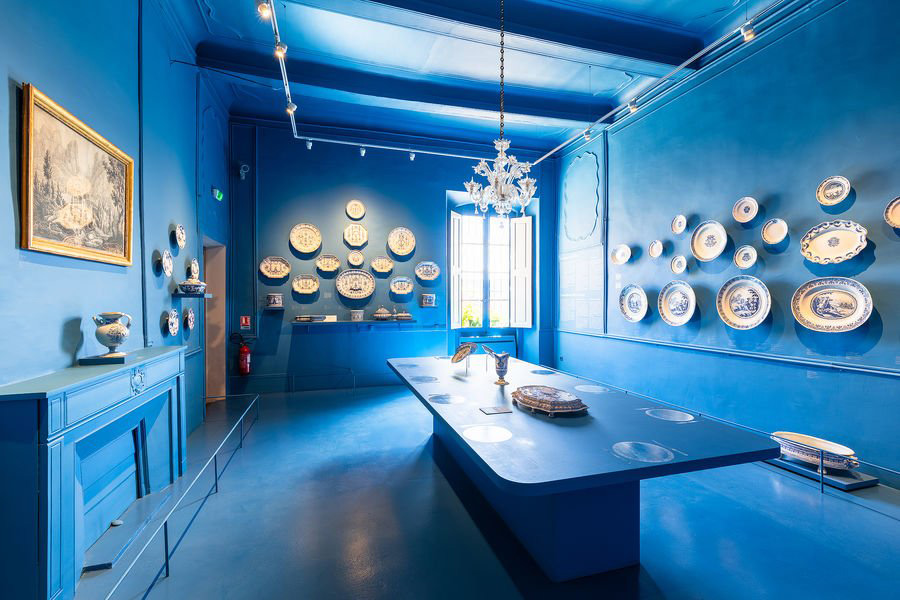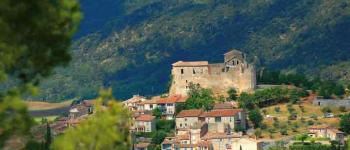
The earthenware produced in Moustiers had the reputation of being "the finest in the kingdom" at the time of Louis XIV. The Musée de la Faïence de Moustiers-Sainte-Marie allows visitors to discover five centuries of masterpieces thanks to a collection enriched by the donation of a patron of the arts, Pierre Jourdan-Barry.
More than 300 extremely rare and high quality pieces are on display, and the Moustiers earthenware production, as lively as ever, allows for the presentation of contemporary pieces.
The Musée de la Faïence exhibits the most beautiful earthenware pieces from the 17th century to the present day. The glazed earthenware room presents historical pottery as well as an assortment of earthenware pieces such as glazed tiles and pipes.
In the projection room, a film retraces the history of Moustiers earthenware and presents the different stages of manufacture, from shaping to decoration and firing.
Moustiers-Sainte-Marie, land of potters and earthenware makers...
As in many sites where clay and wood abound, pottery is attested in Moustiers since the early Middle Ages. It was first of all the Clérissy family, who at the end of the XVIIth century gave birth to the production of earthenware in Moustiers and Marseille (Saint-Jean du désert).
The first piece signed by Pierre Clérissy in Moustiers is dated 1687. The latter became the most famous of these glazed earthenware potters, by crossing the course which led to the earthenware thanks to the presence in Moustiers in 1678 of a religious of the convent of the Servites, Lazzaro Porri and the talent of painters of Riez whose services he knew how to attach himself, François Viry and his sons. The economic situation of the time also helped him. Indeed, following the Sumptuary Edict of 1689, repeated in 1699 and 1709, France changed its taste, following the example of the Sun King who melted down his gold service to replace it with earthenware.
Earthenware became so fashionable that European sovereigns also wanted to own large factories. The Count of Aranda, at the request of the King of Spain, was charged with recruiting the best workers in the kingdom of France to found one around Barcelona. Joseph Olérys and Edouard Roux, both trained in Moustiers, left there in 1726 for about ten years.
Then came the fashion for porcelain, with the last earthenware workshop closing its doors in 1874, and no more earthenware was produced in Moustiers for fifty years.
The time of Marcel Provence came...
Marcel Joannon, was a journalist, writer, historian, ethnologist and above all a lover of Provence from which he took his name. In 1928, with the help of a few friends, he relaunched the earthenware activity. At the same time, he founded the Academy of Moustiers, in charge of the study of earthenware and folklore of Moustiers, then, on September 15, 1929, the Museum of Earthenware. These earthenwares were decorated "Moustiers way", very often with a bird that very quickly became the symbol of Moustiers earthenware.
Unproductive, Marcel Provence's earthenware workshop closed its doors in 1937, but he continued to take an active interest in the Museum and the Academy. When Simone Garnier, one of his first decorators came to set up a workshop in 1943, he co-financed the purchase with the feeling that his work would last.
Today, there are about ten earthenware workshops in Moustiers-Sainte-Marie and six of them form the Union des Faïenciers de Moustiers-Sainte-Marie.
During your visit to the Musée de la Faïence, you will visit the large blue lounge. This room mainly displays blue-decorated earthenware from the two former companies that dominated the early production, namely Clérissy and Olérys. As for the chandelier, it dates from 1900. It is made of transparent Murano glass with pure gold flakes.
Earthenware Museum
Rue du Seigneur de la Clue,
04360 Moustiers-Sainte-Marie
Tel: 04 92 74 61 64
https://www.moustiers.fr/fr/patrimoine-culturel/musee-faience
Translated with www.DeepL.com/Translator
(free version)






